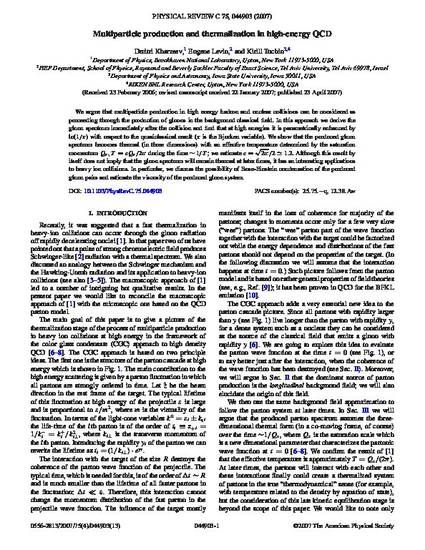
Article
Multiparticle production and thermalization in high-energy QCD
Physical Review C
Document Type
Article
Disciplines
Publication Version
Published Version
Publication Date
1-1-2007
DOI
10.1103/PhysRevC.75.044903
Abstract
We argue that multiparticle production in high energy hadron and nuclear collisions can be considered as proceeding through the production of gluons in the background classical field. In this approach we derive the gluon spectrum immediately after the collision and find that at high energies it is parametrically enhanced by ln(1/x) with respect to the quasiclassical result (x is the Bjorken variable). We show that the produced gluon spectrum becomes thermal (in three dimensions) with an effective temperature determined by the saturation momentum Qs,T=cQs/2π during the time ∼1/T; we estimate c=2π/2 1.2. Although this result by itself does not imply that the gluon spectrum will remain thermal at later times, it has an interesting applications to heavy ion collisions. In particular, we discuss the possibility of Bose-Einstein condensation of the produced gluon pairs and estimate the viscosity of the produced gluon system.
Copyright Owner
American Physical Society
Copyright Date
2007
Language
en
File Format
application/pdf
Citation Information
Dmitri Kharzeev, Eugene Levin and Kirill Tuchin. "Multiparticle production and thermalization in high-energy QCD" Physical Review C Vol. 75 Iss. 4 (2007) p. 044903-1 - 044903-13 Available at: http://works.bepress.com/kirill_tuchin/28/

This article is from Physical Review C 75 (2007): 044903, doi: 10.1103/PhysRevC.75.044903. Posted with permission.